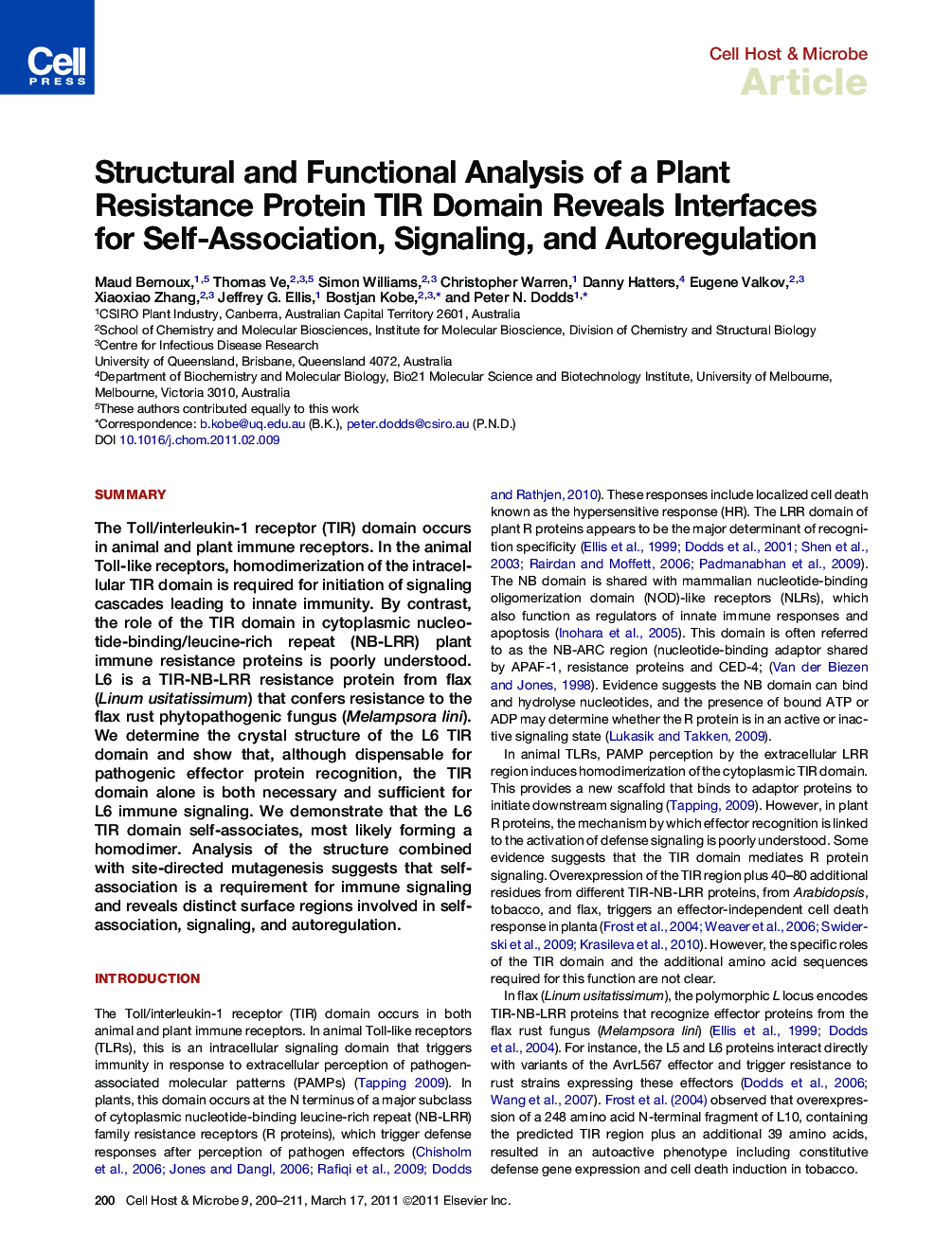| Article ID | Journal | Published Year | Pages | File Type |
|---|---|---|---|---|
| 4361455 | Cell Host & Microbe | 2011 | 12 Pages |
SummaryThe Toll/interleukin-1 receptor (TIR) domain occurs in animal and plant immune receptors. In the animal Toll-like receptors, homodimerization of the intracellular TIR domain is required for initiation of signaling cascades leading to innate immunity. By contrast, the role of the TIR domain in cytoplasmic nucleotide-binding/leucine-rich repeat (NB-LRR) plant immune resistance proteins is poorly understood. L6 is a TIR-NB-LRR resistance protein from flax (Linum usitatissimum) that confers resistance to the flax rust phytopathogenic fungus (Melampsora lini). We determine the crystal structure of the L6 TIR domain and show that, although dispensable for pathogenic effector protein recognition, the TIR domain alone is both necessary and sufficient for L6 immune signaling. We demonstrate that the L6 TIR domain self-associates, most likely forming a homodimer. Analysis of the structure combined with site-directed mutagenesis suggests that self-association is a requirement for immune signaling and reveals distinct surface regions involved in self-association, signaling, and autoregulation.
► The flax rust resistance L6 TIR domain is dispensible for effector recognition ► L6 TIR domain is required and sufficient to induce defense signaling ► L6 TIR domain self-association is required for signal activation ► Crystal structure of L6 TIR reveals regions involved in self-association and signaling
